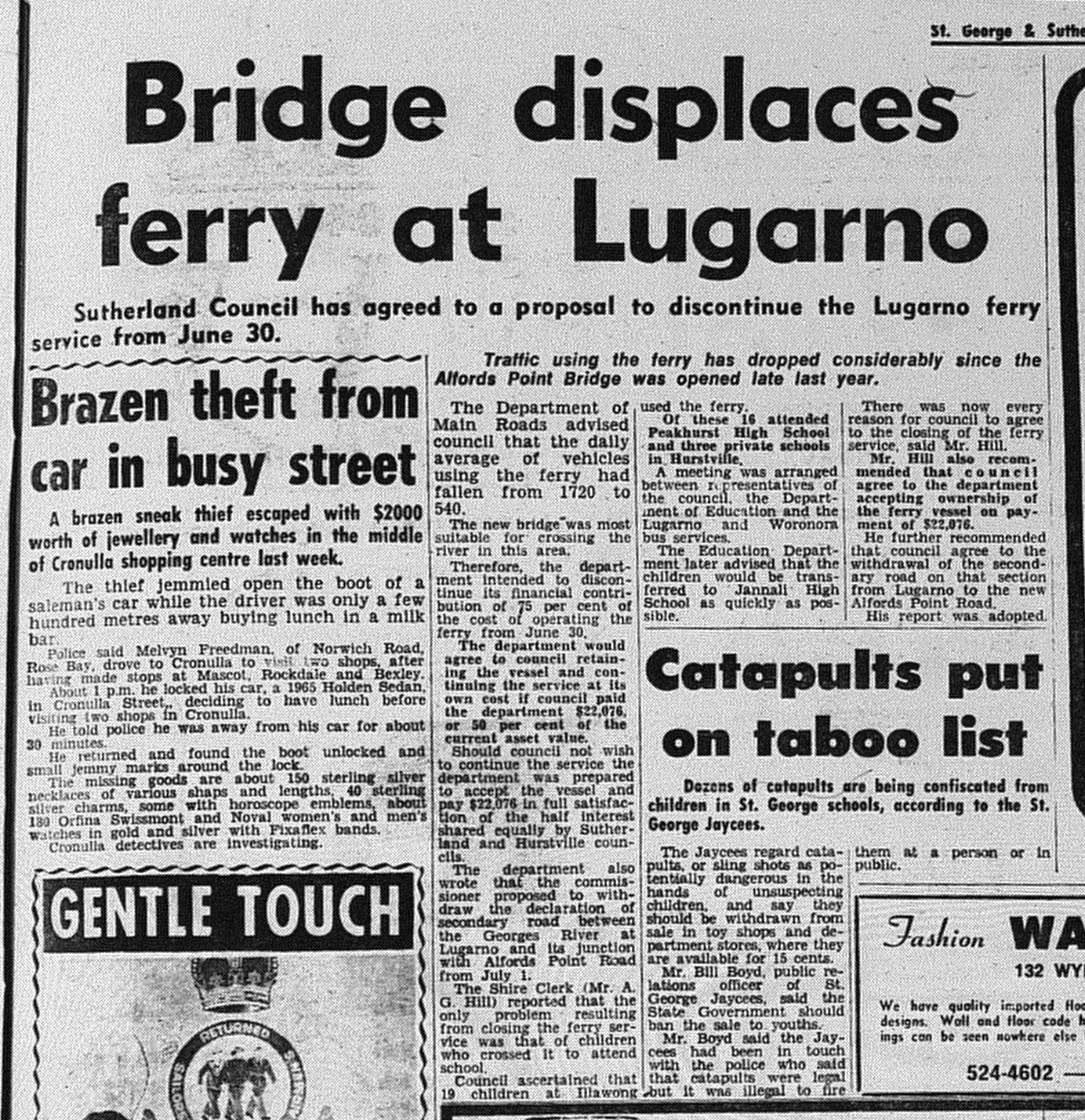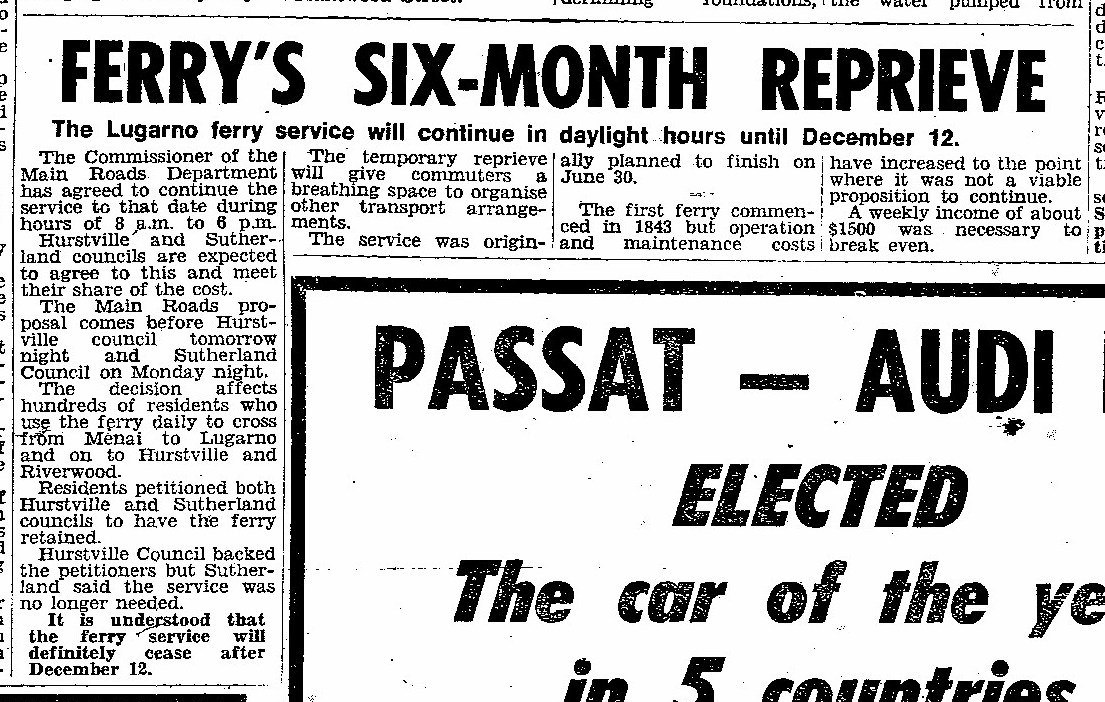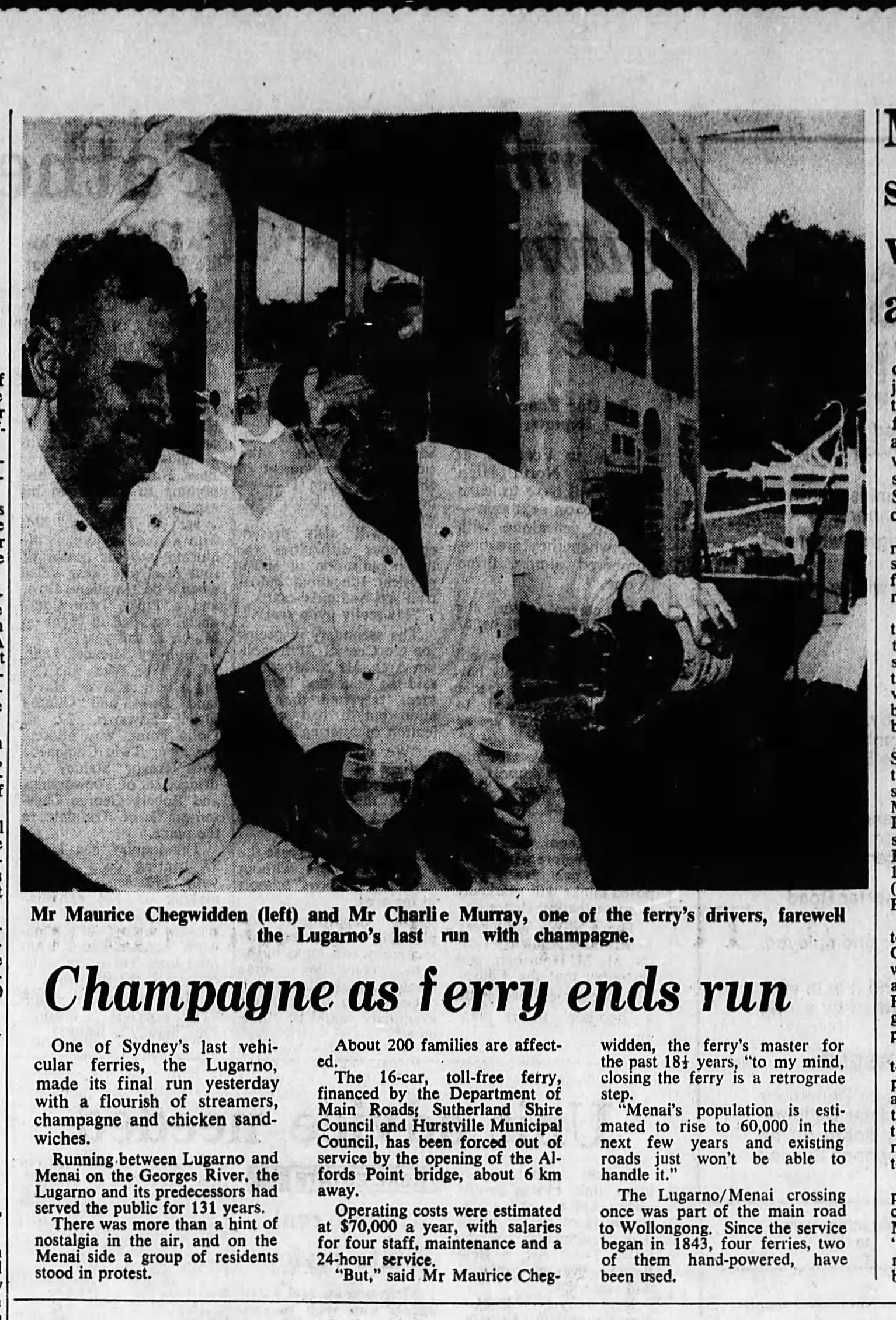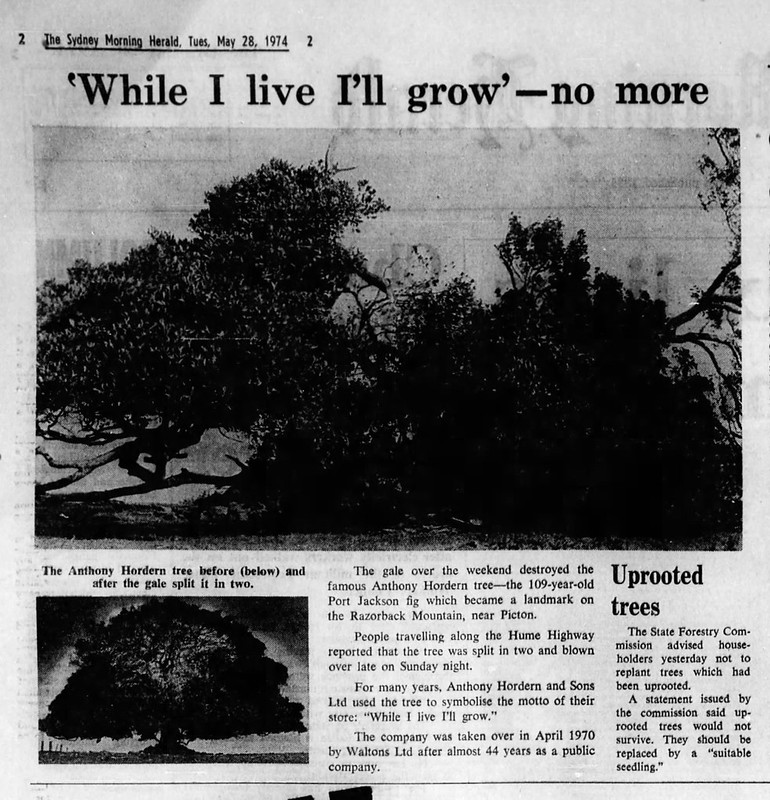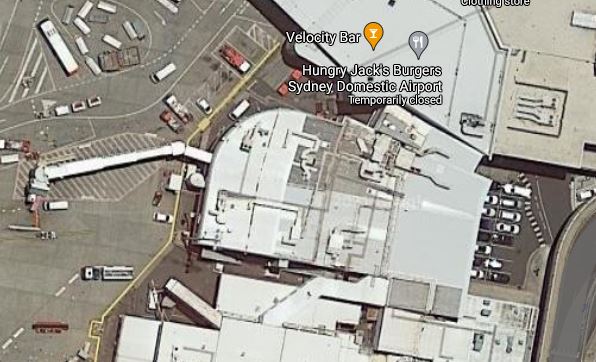The opening of the Alfords Point Bridge in 1973 resulted in the end of the Lugarno Ferry. The Lugarno Ferry was a punt service carrying vehicles and people across the Georges River between Lugarno and Illawong.
In March 1974, it was announced by the Main Roads Department that the ferry service would conclude on June 30 1974. It was not received well in Illawong, with some residents indicating that they would be forced to move homes.
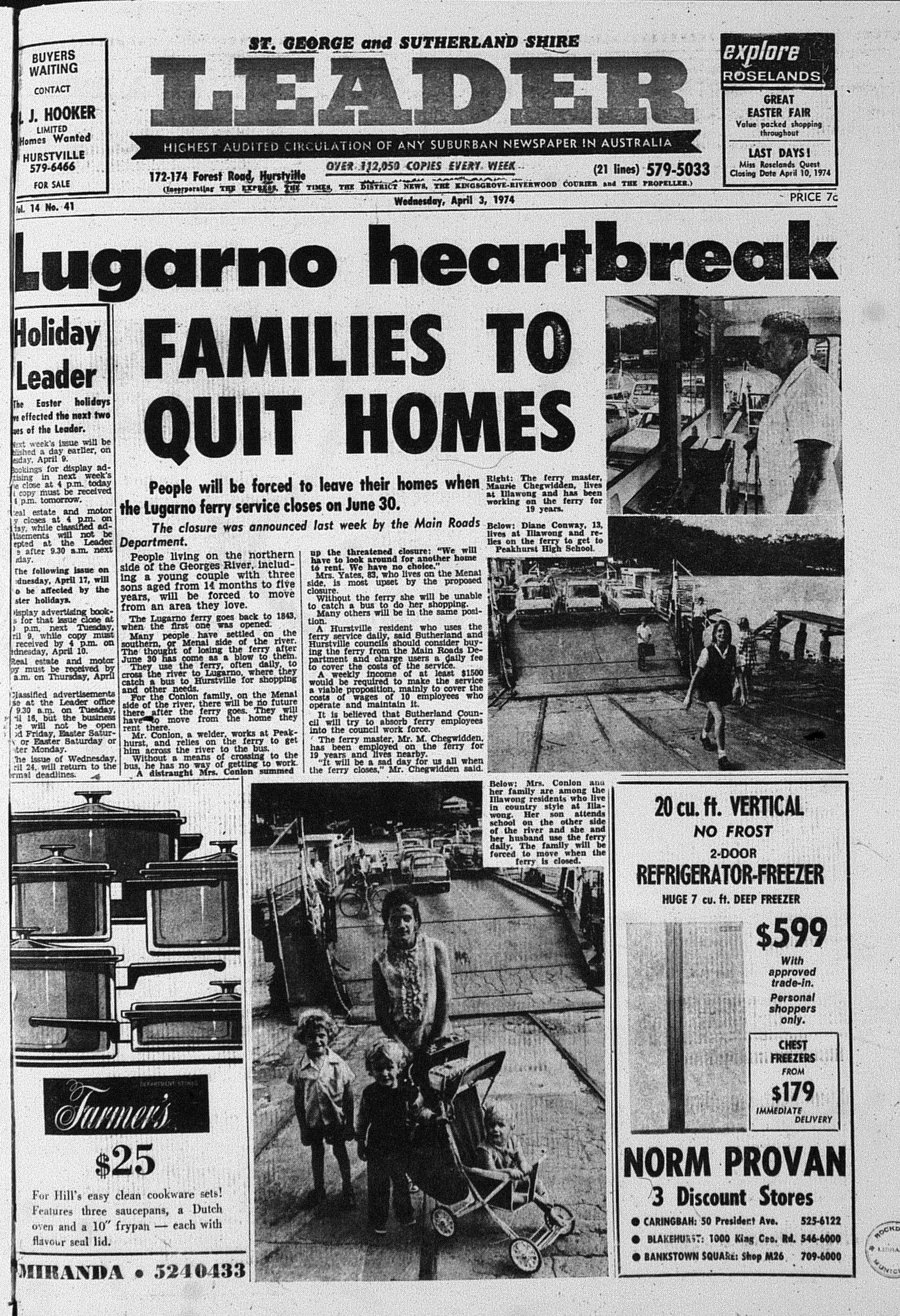
Source: Anon. 1974. "Lugarno heartbreak: families to quit homes". The St George and Sutherland Shire Leader, April 3: 1.
Sutherland Council backed the proposal given that daily patronage was averaging 540 vehicles, down from 1720 prior to closure.
Source: Anon. 1974. "Bridge displaces ferry at Lugarno". The St George and Sutherland Shire Leader, April 3: 15.
Source: Anon. 1974. "Ferry's six-month reprieve". The St George and Sutherland Leader, June 5:3.
In June, it was announced that the ferry would close on December 12 1974. However, a reduced service would operate for the final five months of its operation.
While residents on both sides of the river were happy that the service would continue to operate in the short term, concerns were raised that youths and the elderly would be disadvantaged as they did not have cars and were dependent on the ferry to cross the river.
Source: Anon. 1974. "Ferry to stay". The St George and Sutherland Shire Leader, June 12: 5.
Residents had petitioned Hurstville and Sutherland Council to maintain the service. While Hurstville Council backed the residents, Sutherland Council believed that the service was "no longer needed". The costs of operating the ferry had become financially unviable in its final years of operation, even though the service did not provide a toll
Source: Anon. 1974. "Champagne as ferry ends run". The Sydney Morning Herald, December 4: 9.
Source: Anon. 1974. "Lugarno Ferry R.I.P". The St George and Sutherland Shire Leader, December 18: 3.
December 12 1974, saw the ferry undertake its final run after 131 years of operation. There was a ceremony to mark its closure involving representatives of Sutherland and Hurstville Councils along with the Department of Main Roads. The ferry was relocated to Berowra.
Related Entries



